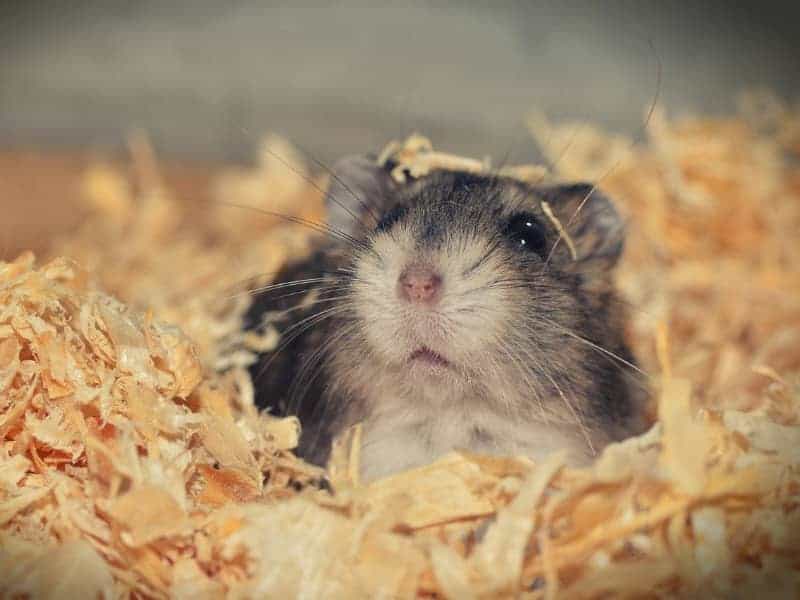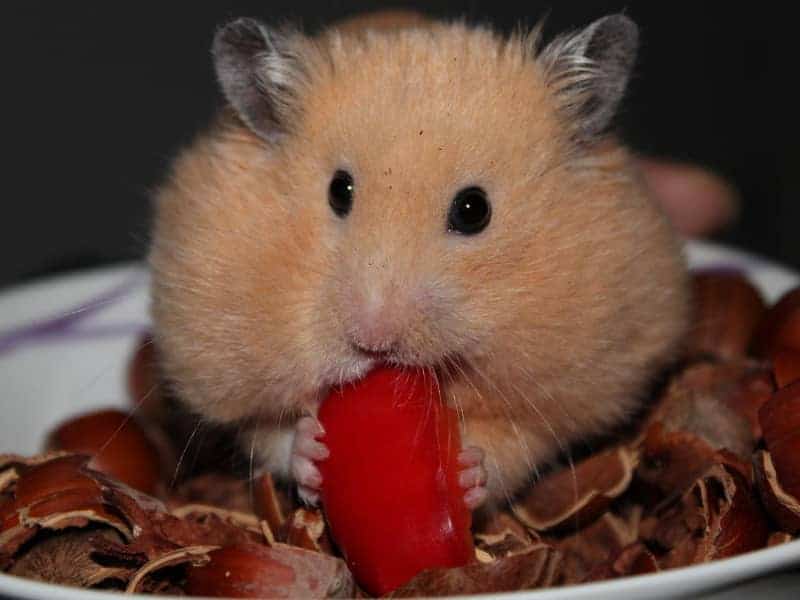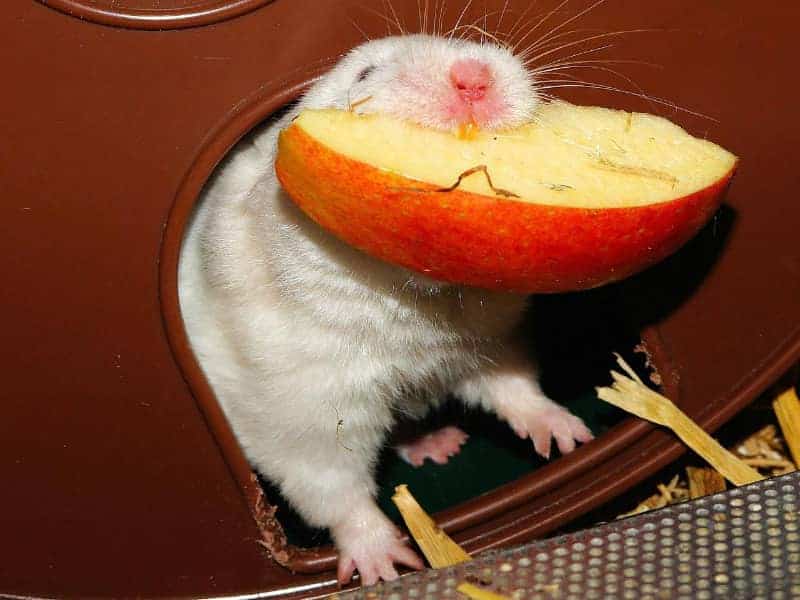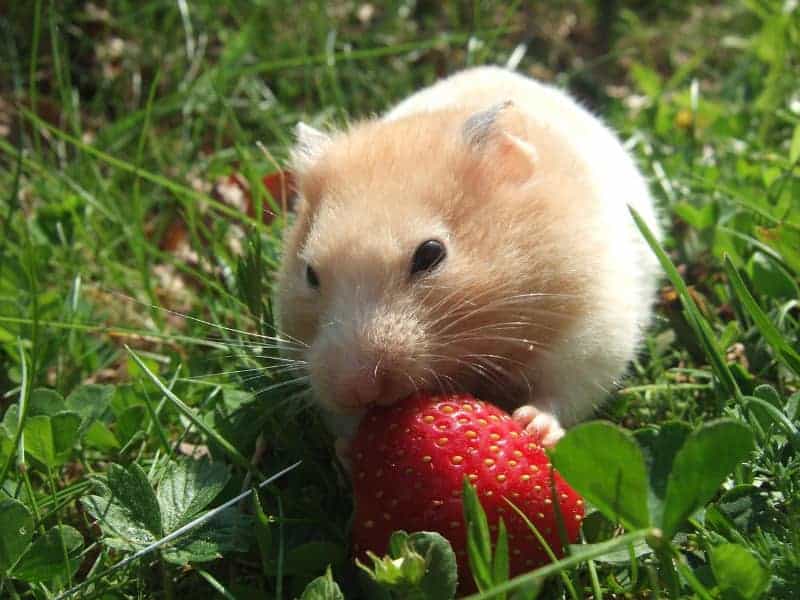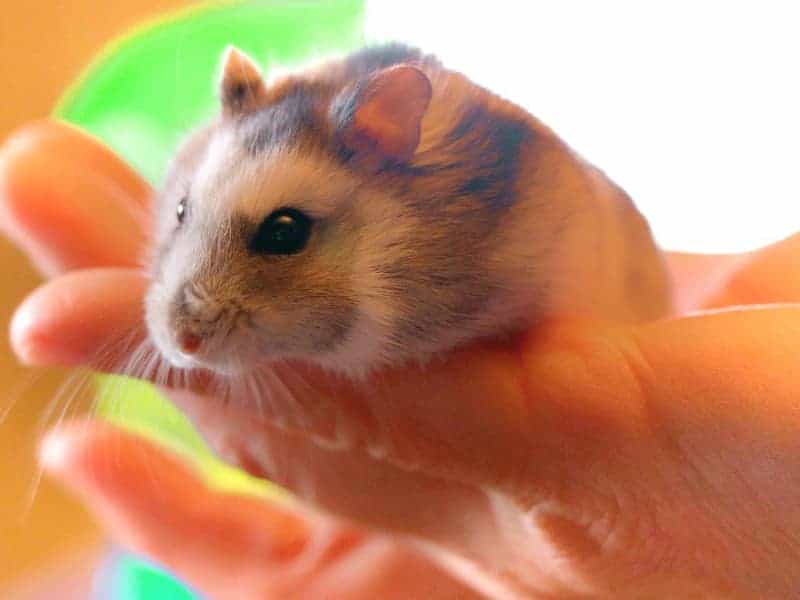
Are hamsters allowed to eat tomatoes?
Yes, your hamster can eat tomatoes. But there are some things to keep in mind, as tomatoes are a nightshade plant. Certain parts of the plant should not be eaten by your hamster. We humans often eat these plant parts, although they are not harmless for us either, as they contain poison. Everything important you need to know about feeding tomatoes to your hamster, you can find out here.
- Are hamsters allowed to eat tomatoes?
- Are hamsters allowed to eat tomatoes completely?
- How to feed your hamster tomatoes
- This is what you should pay attention to after feeding the tomatoes
- Tomatoes as a lure for the hamster
- Every day tomatoes for the hamster?
- Can hamsters eat the seeds of the tomato?
- Are hamsters allowed to eat tomato skins?
- Are tomatoes healthy for the hamster?
- Are all breeds of hamsters allowed to eat tomatoes?
- Are hamsters allowed to eat tomatoes completely?
Are hamsters allowed to eat tomatoes completely?
No, the hamsters should not eat the tomatoes completely. The reason for this is that a poisonous alkaloid is present in green parts and in the stalk. This is present in all nightshade plants, which includes the tomato. This alkaloid is called solanine and is a bitter substance that protects the plants from parasites and fungal attack. However, it is dangerous for your hamster and for us humans if ingested in excess.
When it is overdosed, the following symptoms occur:
- Nausea
- Headache
- Sweats
- Diarrhea
- Visual disturbances
- Anxiety
As you can see, this alkaloid is not to be underestimated. But don't worry, if you remove the stalk from a tomato, your hamster can eat tomatoes.
The hamster is a herbivore and most animals will gladly accept the tomatoes. Nevertheless, you should pay attention to a few things. Tomatoes contain acid, which not every hamster tolerates well. Therefore, observe how your hamster reacts to tomatoes. Also, you should only offer him a small cube with an edge length of 1 cm at the beginning.
After that, closely monitor for any diarrhea or gastrointestinal problems. For young hamsters up to the eighth week of life, you should completely avoid tomatoes. This is because the young organism does not yet cope as well with the acid and the high amount of fiber as is the case with the old hamster.
How to feed your hamster tomatoes
If your hamster has never eaten tomatoes, watch your pet closely. If he accepts the tomato, he eats it immediately, or he carries it to one of his hiding places to eat it later. Maybe the piece of tomato will rot in an unknown place in his enclosure, so keep an eye on what your hamster does with the tomato.
As we have described above, the tomato with its bitter substance solanine can cause indisposition and disease. Therefore, always pay close attention that the stalk has been generously removed and that the tomato has no green spots. Tomatoes should in principle only be eaten when they have a rich red color.
The offered tomato should be cut into small cubes with an edge length of about 1 cm. So the hamster can grab them well and nibble on it. Should you have a dwarf hamster, then the pieces can also be somewhat smaller. The maximum feeding amount should not exceed one lightly heaped teaspoon per week. With a dwarf hamster you should stay under this amount.
This is what you should pay attention to after feeding the tomatoes
A hamster is very fond of depositing its food in the craziest places in its enclosure. Therefore, pay close attention to where the hamster puts the tomato if he does not eat it immediately. If you are not sure, check the whole enclosure the next day at the latest to find any remains of the tomato. You should do this at least twice a week as a hamster owner who offers a lot of fresh food.
In this way you avoid that the food rots in corners and the hamster eventually eats from it and gets sick.
Tomatoes as a lure for the hamster
Tomatoes are probably rarely suitable for attracting a hamster. Not that hamsters don't like to eat tomatoes, but don't consider them a special treat. They are a supplement in their diet and therefore other things and especially fruits are much better suited to attract a hamster. However, if your hamster is crazy about tomatoes, try the following.
Take a small piece of the tomato, put it on your fingertips and hold your hand near the hamster. Most hamsters are very curious and will at least take a look at what is interesting there. This way you can get him used to you and after some time, he will take the food from your hand. Whether this works with a shy animal, however, with tomatoes, we do not know.
Every day tomatoes for the hamster?
No, absolutely not. As explained above, this would be counterproductive for the health of your pet. Because of the high acidity, the cheek pouches can become inflamed when the hamster stores the tomatoes in them. It can also cause problems in the gastrointestinal tract, mainly diarrhea.
Therefore, remember our feeding recommendation of no more than one lightly heaping teaspoon per week.
Can hamsters eat the seeds of the tomato?
We would recommend that you remove the seeds before feeding. Because these can also contain solanine. Although the amount in the seeds is small, you must not forget that your hamster is also very small. Therefore, as a precaution, remove the seeds and so you are on the safe side and can offer your hamster the tomatoes without any problems.
Are hamsters allowed to eat tomato skins?
There is nothing against your hamster eating the tomato skins. Almost all fruits and vegetables contain most of their nutrients in the peel. If you make sure that there are no green spots, then your hamster should be able to eat the tomato peels without hesitation.
However, even with tomatoes, if it is possible for you, we recommend buying tomatoes that are organically grown. These have less pesticides and are generally better tolerated by humans and animals.
Are tomatoes healthy for the hamster?
In any case, tomatoes are healthy for your hamster. They contain a whole load of nutrients and antioxidants. The carotenoid lycopene in particular is said to be a particularly good antioxidant. It helps prevent disease and is even said to suppress cancers in their preliminary stages. While tomatoes are 93-95 % water, they contain a wide variety of nutrients. These are:
- Potassium
- Sodium
- Magnesium
- Calcium
- Iron
- Vitamin A
- Vitamin E
- Vitamin C
- Folic acid
- Vitamin B1, B2, B5, and B6
A nutritious and extremely healthy plant that offers nutrients that are vital for humans and animals. Of course, this still includes nutrients that provide an excellent basis for nutrition. These include:
- Fat: 0.5 g
- Protein: 1 g
- Carbohydrates: 3 g
- Dietary fiber 0.9 g
- Minerals 0.5 g
- organic acids 0.5 g
Are all breeds of hamsters allowed to eat tomatoes?
Yes, of course all hamster breeds are allowed to eat tomatoes. Of course, you must follow the feeding recommendations for each breed so that no health problems can occur. Important here is primarily the size of your hamster. Because dwarf hamster breeds should get significantly less of the amount. In most cases 50 % is a good value to orientate yourself by.
Even if your hamster likes tomatoes, you should follow these recommendations. Because it is better to feed less of the beloved tomato than too much. Your animal will thank you.
Author

-
Garden animal - A life with nature
Welcome to my animal blog! My name is Dirk and I am happy to take you on my journey through the fascinating world of animals and gardening.
Born 54 years ago, I have had an insatiable curiosity for the animal world around me since childhood. Although I have moved professionally in other industries, my true passion has always been animals and nature. It is remarkable how a small garden has become such an important part of my life.
Many of my fondest memories are associated with the animals that share our home. Whether it's the curious squirrels that scurry across the trees in the morning, the colorful variety of birds that visit our feeders, or the busy bees and butterflies that pollinate our flowers, every moment with them is invaluable to me.
This blog is my contribution to share my experiences, discoveries and insights with like-minded people. Here I will share stories of unforgettable encounters with animals, give tips on gardening and creating wildlife-friendly habitats, and take you on my journeys through nature.
Thank you so much for being here!
Cordial,
Dirk aka garden animal
Last posts
- 27. February 2024PetsVeganes Hundefutter – Grün und Gesund?
- 18. January 2024ChickensOregano für Hühner
- November 27, 2023HamsterDiurnal hamsters
- November 24, 2023HamsterHamster hammock

